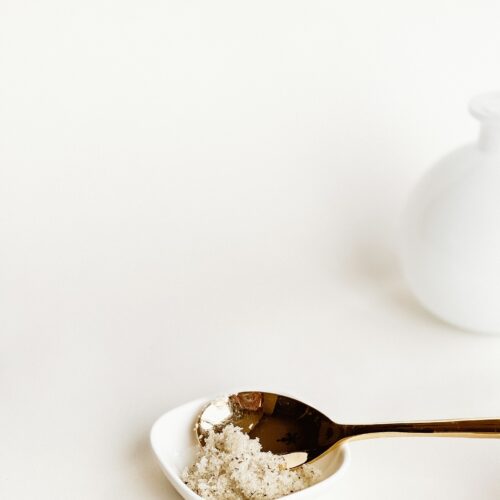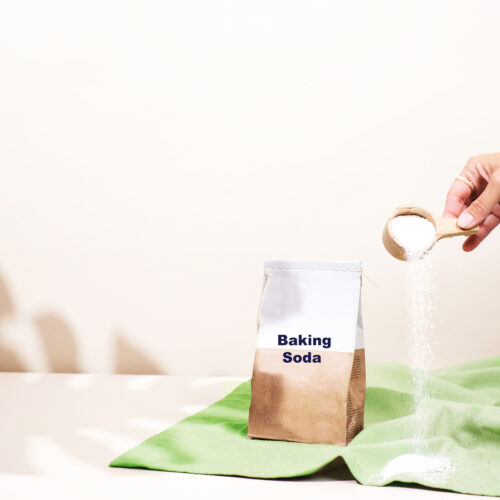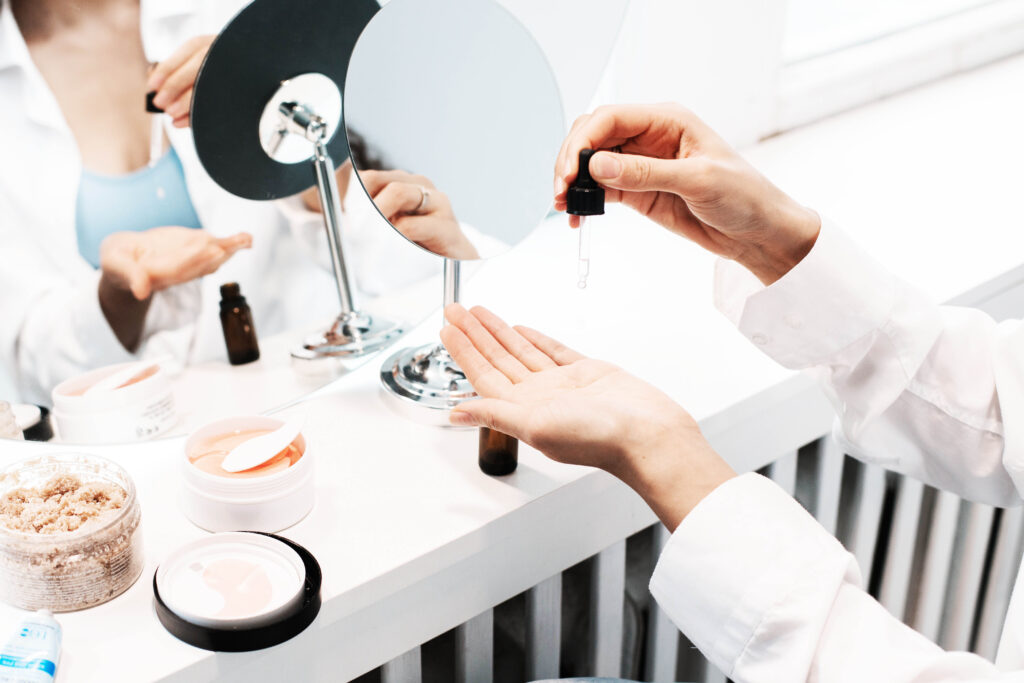
Don’t Let Your Halloween Makeup Haunt You – Follow These Tips to Keep Your Skin Spooktacular
Halloween makeup can be a lot of fun, but removing it can be a challenge. Leaving makeup on the skin for too long can clog pores and lead to breakouts, so it’s essential to remove it thoroughly.
There are many different ways to remove Halloween makeup, from makeup remover wipes to oil-based cleansers, and it’s essential to choose a method that works well for your skin type and concerns. However, it’s not enough to remove the makeup – you also need to ensure that your skin is clean and healthy.
Following a few simple steps, you can ensure your skin stays healthy and radiant, even after removing heavy Halloween makeup.
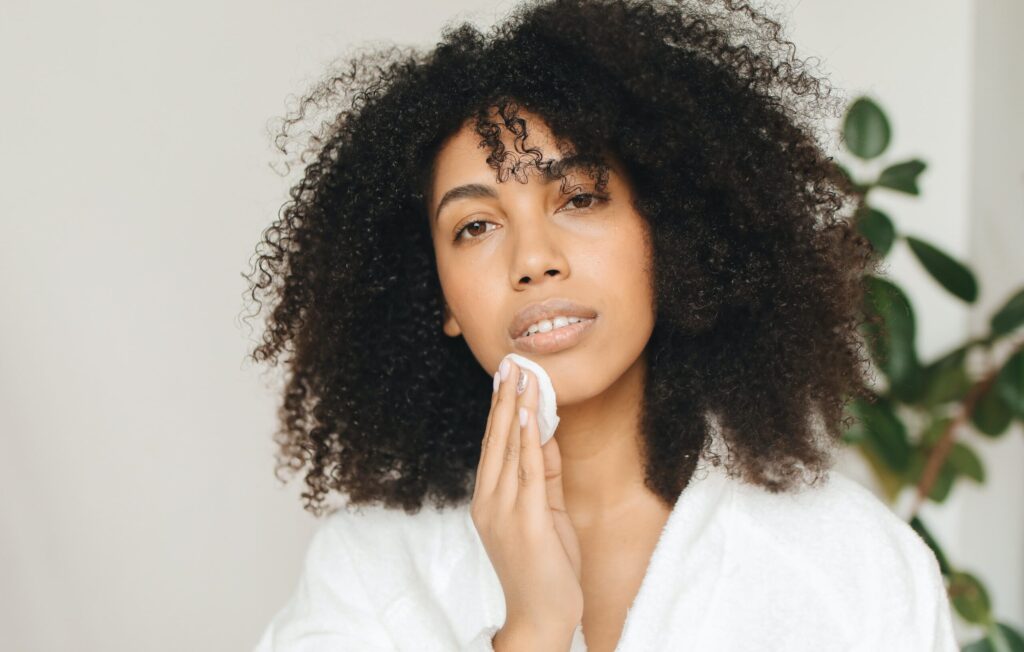 Halloween Makeup Removal Cleansing options:
Halloween Makeup Removal Cleansing options:
- Makeup remover wipes: Using makeup remover wipes specifically designed for heavy or long-lasting makeup can quickly and easily remove Halloween makeup. Using these wipes is essential as they are gentle on the skin and effective at removing stubborn makeup.
- Micellar water: Micellar water is a gentle yet effective cleansing option that can remove even waterproof makeup. It is essential to use micellar water as it is non-irritating and non-drying, making it an excellent choice for sensitive skin.

- Oil-based cleansers: Oil-based cleansers can break down heavy makeup, making removing it easier. It’s essential to use an oil-based cleanser as it is gentle and hydrating, preventing the skin from drying out or becoming irritated.
- Coconut oil: Coconut oil can be used to remove Halloween makeup as it is a natural and effective makeup remover. It’s important to use coconut oil as it is gentle on the skin and contains nourishing properties that help to hydrate and protect the skin.

- Cleansing balms: Similar to oil-based cleansers, cleansing balms can effectively remove heavy makeup but contain nourishing ingredients that help hydrate the skin. It’s essential to use cleansing balms as they are gentle on the skin and prevent dryness and irritation.
- Baby oil: Baby oil is an inexpensive and gentle option for removing Halloween makeup. It is effective at breaking down even waterproof makeup, but it’s important to rinse thoroughly with water to remove any excess oil.
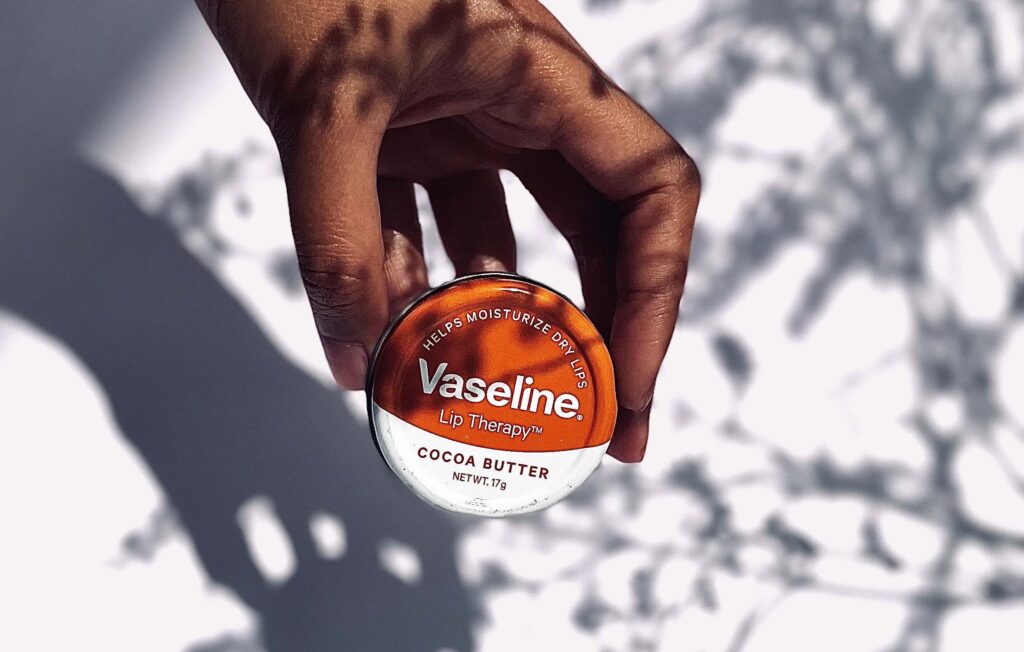
- Vaseline Lip Therapy: Vaseline Cocoa Butter Lip Therapy can be used as a gentle and effective makeup remover. The cocoa butter is particularly good at removing eye makeup, but it’s essential to be careful when using it around the eyes as it can cause irritation.
- Witch hazel: Witch hazel is a natural astringent that can remove Halloween makeup. It is perfect for removing makeup from oily skin as it helps to control oil production and prevent breakouts.

- Alcohol-free toner: An alcohol-free toner can be used to remove Halloween makeup. It helps remove dirt and oil from the skin, but choosing a gentle toner that won’t dry out or irritate the skin is important.
- Baking soda: Baking soda can make a gentle and effective makeup remover. Mix a teaspoon of baking soda with a few drops of water to form a paste, and then apply it to the face to remove makeup. It’s important to rinse thoroughly with water to remove any residue.
TIP: It’s important to note that everyone’s skin is different, so choosing a makeup remover that works well for your skin type and concerns is essential. Always check with a dermatologist if you have acne issues and sensitive skin.
After removing your Halloween makeup, it’s essential to cleanse your skin thoroughly to ensure that your pores are clean and your skin is free from any leftover makeup, dirt, or debris.
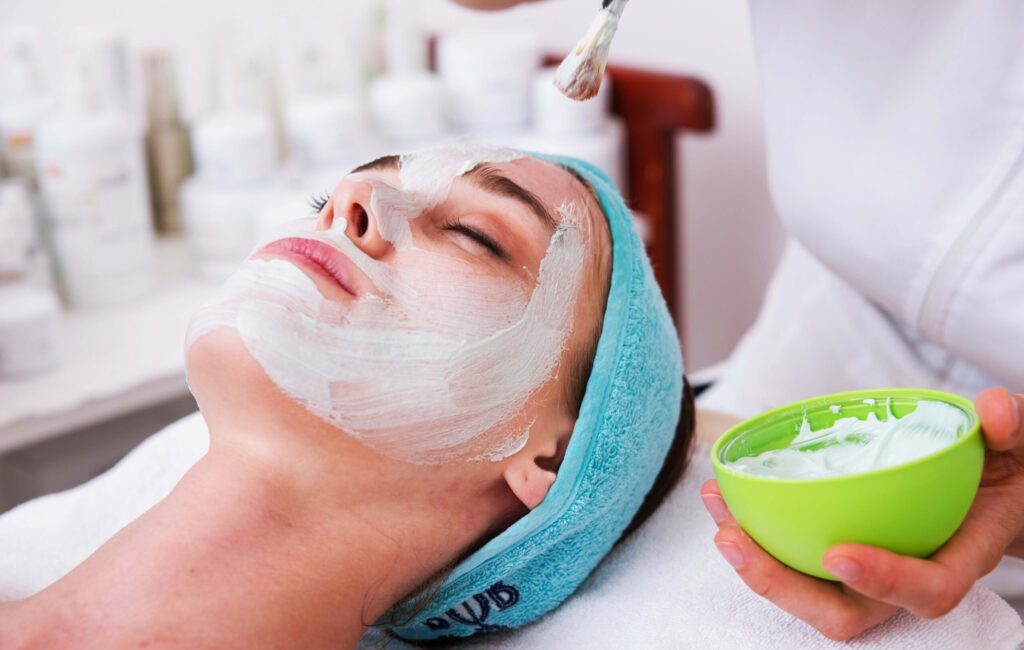 Consider a professional facial to get more of a deep cleaning for your skin.
Consider a professional facial to get more of a deep cleaning for your skin.
Here are some steps you can follow to ensure your skin is clean and healthy:
- Double cleanse: Double cleansing is an important step to ensure that all traces of makeup are removed from the skin. Start with an oil-based cleanser to break down any remaining makeup, and then follow up with a water-based cleanser to remove any dirt or debris. This ensures that your skin is thoroughly cleansed and ready for the next steps in your skincare routine.
- Exfoliate: Exfoliating your skin helps remove dead skin cells and unclog pores, leaving your skin brighter and more radiant. You can use a physical exfoliant (such as a scrub) or a chemical exfoliant (such as an AHA or BHA) to exfoliate your skin.
- Tone: Using a toner after cleansing helps to balance your skin’s pH and prepare it for the rest of your skincare routine. Choose a gentle and alcohol-free toner to avoid drying out your skin.
- Moisturize: Moisturizing your skin is important to ensure that it stays hydrated and healthy. Choose a moisturizer suitable for your skin type, and apply it to your skin in gentle, upward strokes.
- Apply a face mask: Using a face mask once or twice a week can help to deep-cleanse your pores and leave your skin looking and feeling refreshed. Choose a face mask suitable for your skin type and concerns, and leave it on for the recommended time before rinsing off.
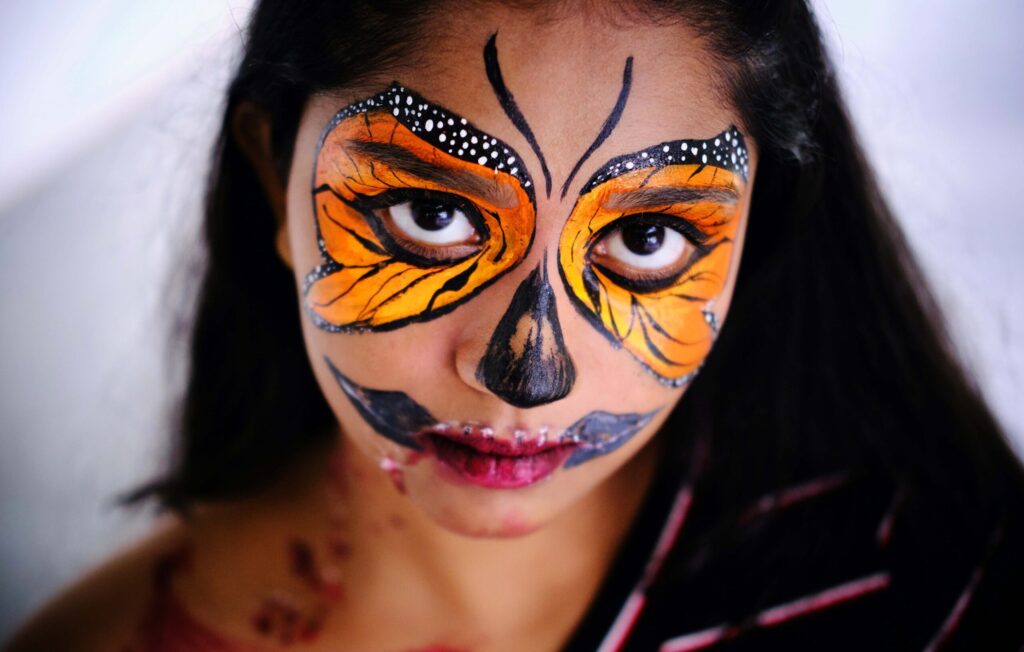 Did you know?
Did you know?
Halloween makeup has been used for centuries to scare off evil spirits. In ancient times, people would paint their faces with natural pigments and wear masks made from animal hides to ward off ghosts and other supernatural beings.
Halloween makeup is used more for entertainment and creativity, but it still has roots in ancient traditions of using makeup and masks to protect oneself from the unknown.
A little history:
Halloween, also known as All Hallows’ Eve or Samhain, is a holiday that originated over 2,000 years ago in Celtic Ireland—the holiday marked the end of the harvest season and the beginning of the dark, cold winter, a time associated with death and supernatural forces.
During this time, it was believed that the veil between the living and the dead was at its thinnest, allowing spirits to cross over into the world of the living. To ward off these spirits, the Celts would light bonfires and wear costumes to disguise themselves as ghosts and supernatural beings.
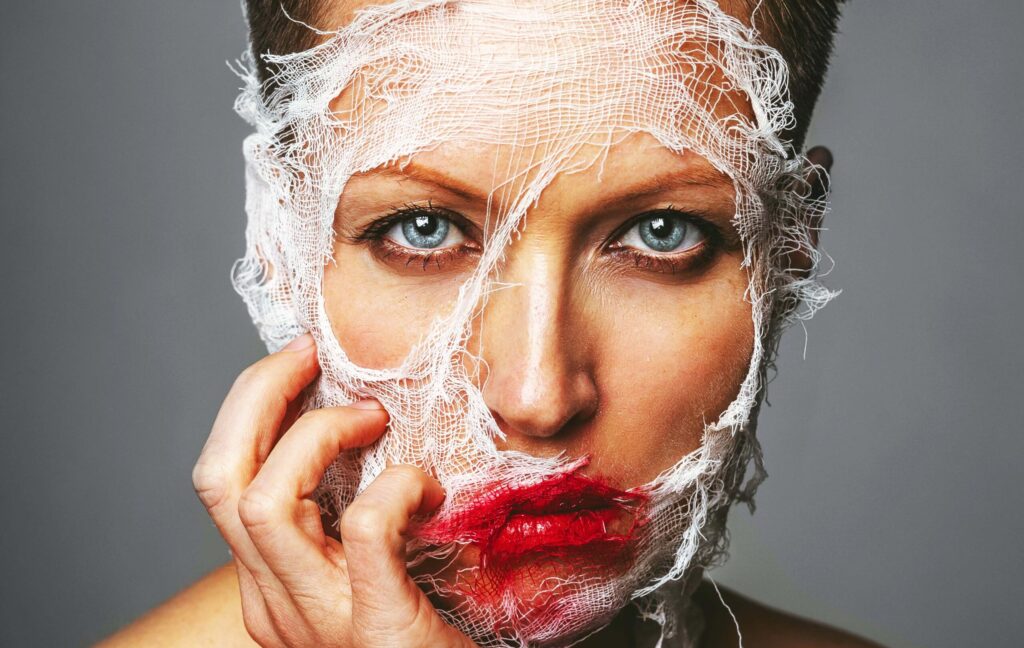
When the Romans conquered Celtic Ireland in the 1st century AD, they introduced their traditions, including Feralia, a day in late October when they honored the dead, and Pomona, a festival celebrating the goddess of fruit and trees.
Over time, these traditions merged with the Celtic holiday of Samhain, and Halloween as we know it today began to take shape. As Christianity spread throughout Europe, the holiday was reinterpreted as All Saints’ Day, or All Hallows’ Day, to honor the Christian saints and martyrs.
Halloween was also known as All Hallows’ Eve, the night before All Saints’ Day. Eventually, it became a popular secular holiday celebrated with costumes, trick-or-treating, and other spooky traditions.
